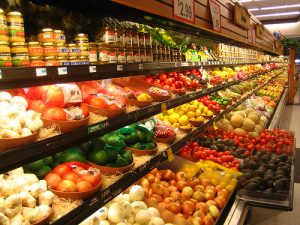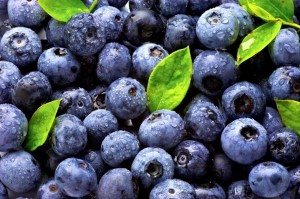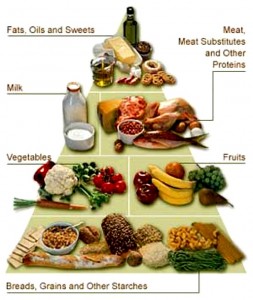Managing Diabetes through a Healthy Diet: What to Eat and Avoid
Diabetes is a chronic metabolic disorder characterized by high blood sugar levels that can cause a range of complications if left unmanaged. One of the most important ways to manage diabetes is through dietary intervention. Proper nutrition can help individuals with diabetes maintain healthy blood sugar levels, prevent complications, and improve overall health and quality of life.
In this article, we will provide a comprehensive overview of diabetes diet guidelines, including what to eat if you are diabetic, foods to avoid, and tips for meal planning and preparation.
What to eat if you are diabetic
Complex Carbohydrates:
Complex carbohydrates are an essential component of a healthy diet for individuals with diabetes. These carbohydrates are broken down slowly in the body, which helps regulate blood sugar levels. Foods that are high in complex carbohydrates include whole grains, legumes, vegetables, and fruits.
Some examples of complex carbohydrates include:
- Brown rice
- Quinoa
- Whole grain bread
- Oatmeal
- Sweet potatoes
- Lentils
- Chickpeas
- Black beans
- Apples
- Berries
- Oranges
- Grapefruit
Lean Proteins:
Protein is an essential nutrient that helps build and repair tissues in the body. However, not all proteins are created equal. When choosing protein sources, it’s important to opt for lean options that are low in saturated fat.
Some examples of lean proteins include:
- Skinless chicken or turkey
- Fish, such as salmon, tuna, and cod
- Legumes, such as lentils, chickpeas, and black beans
- Low-fat dairy products, such as Greek yogurt and skim milk
- Tofu
- Egg whites
Healthy Fats:
Contrary to popular belief, not all fats are bad for you. In fact, healthy fats are essential for overall health and can help to regulate your blood sugar levels.
Some examples of healthy fats include:
- Avocado
- Nuts, such as almonds, walnuts, and pistachios
- Seeds, such as chia seeds and flaxseeds
- Olive oil
- Canola oil
Fiber:
Fiber is a type of carbohydrate that cannot be digested by the body. However, it plays an essential role in regulating blood sugar levels and promoting digestive health.
Some examples of high-fiber foods include:
- Whole grains, such as brown rice, quinoa, and whole-grain bread
- Fruits, such as apples, oranges, and berries
- Vegetables, such as broccoli, carrots, and sweet potatoes
- Legumes, such as lentils, chickpeas, and black beans
- Nuts and seeds, such as almonds, chia seeds, and flaxseeds
Water:
Staying hydrated is essential for individuals with diabetes. Drinking enough water can help regulate blood sugar levels and prevent dehydration, which can lead to a range of complications.
Foods to avoid if you are diabetic
Simple Carbohydrates:
Simple carbohydrates are quickly broken down in the body, which can cause a rapid increase in blood sugar levels. If you have diabetes, you should avoid or limit foods that are high in simple carbohydrates, such as:
- Candy
- Soda
- Juice
- Pastries
- White bread
- White rice
- Potatoes
- Pasta
Saturated and trans fats:
Saturated and trans fats are unhealthy fats that can increase the risk of heart disease and other diabetes complications in people with diabetes. Foods that are high in these types of fats include:
- Red meat
- Processed meats, such as bacon and sausage
- Butter
- Cheese
- Fried foods
- Margarine
- Shortening
What about salt? Can you eat salt if you are diabetic?
If you have diabetes, it’s important to monitor your sodium intake, but you don’t necessarily have to avoid salt altogether.
While salt doesn’t directly affect blood sugar levels, it can raise blood pressure and increase the risk of cardiovascular disease, which is already a concern for people with diabetes. Therefore, it is recommended that people with diabetes limit their salt intake to 2,300 milligrams per day or less.
However, this amount may vary depending on individual health needs, so it’s always best to consult with a healthcare provider or registered dietitian to determine the appropriate amount of sodium for your specific condition.
Additionally, there are ways to flavor food without adding salt, such as using herbs, spices, or other low-sodium seasonings.




 Mapping out your menu for the week is a must-do before heading to the diabetes food store. After planning what you’ll eat, take an inventory of your food stock and write your shopping list.
Mapping out your menu for the week is a must-do before heading to the diabetes food store. After planning what you’ll eat, take an inventory of your food stock and write your shopping list.
 Eating fresh vegetables and fruits is not the only way to reap their health benefits. Since most vegetables and fruits are usually frozen when they’re at peak readiness, frozen options are both nutrient-dense and highly convenient.
Eating fresh vegetables and fruits is not the only way to reap their health benefits. Since most vegetables and fruits are usually frozen when they’re at peak readiness, frozen options are both nutrient-dense and highly convenient.
